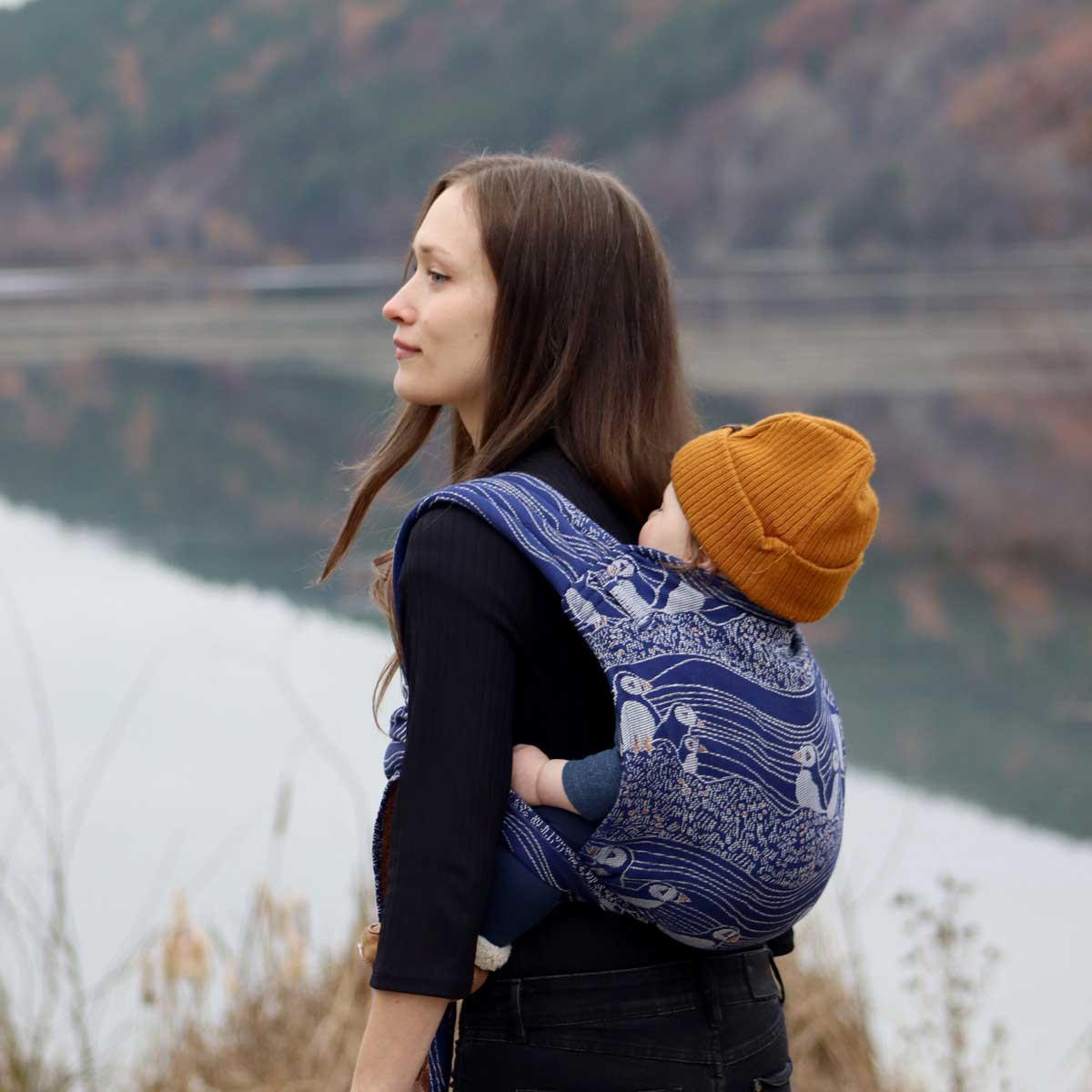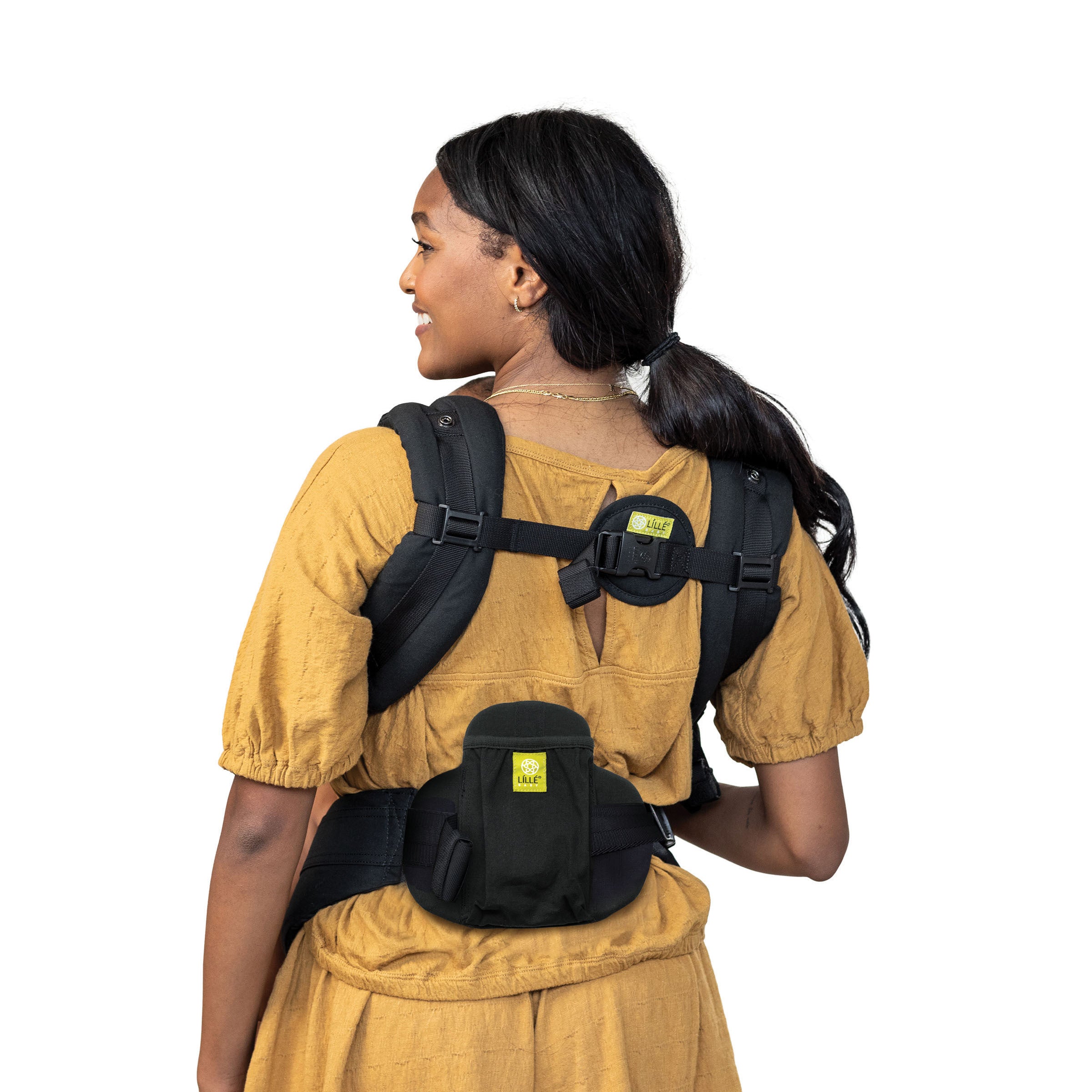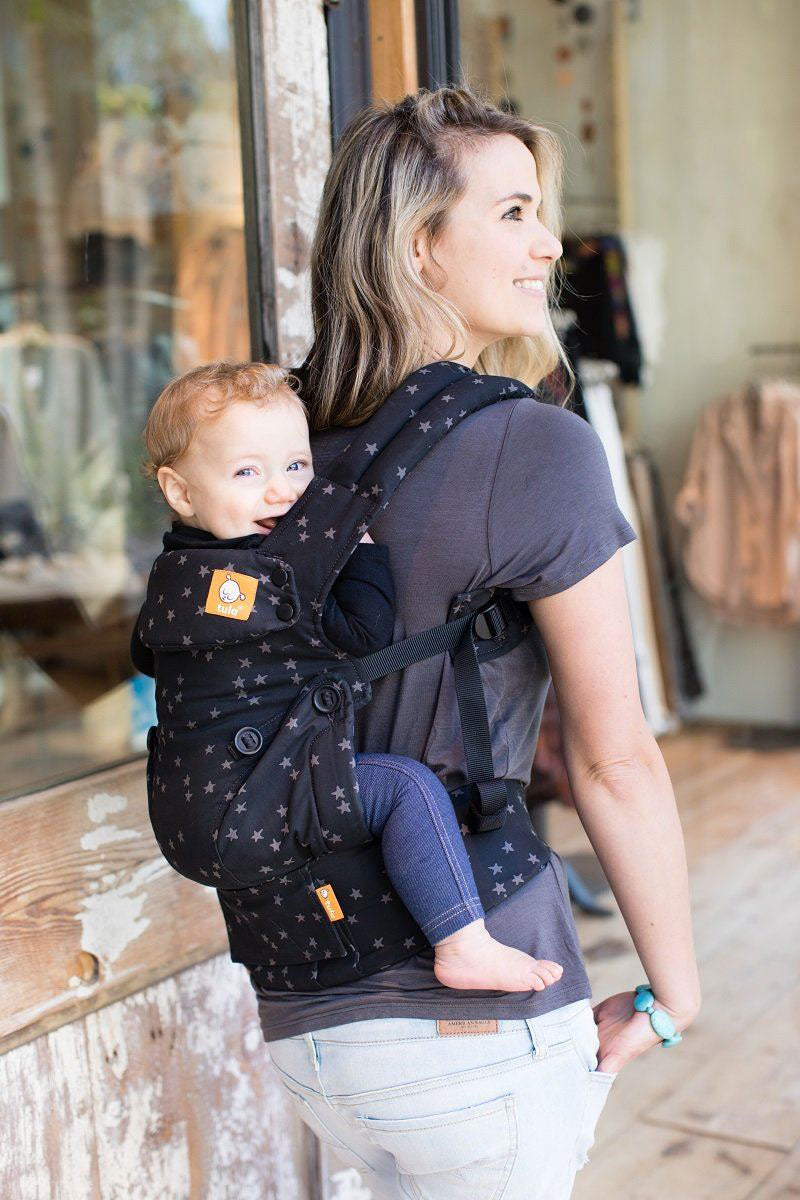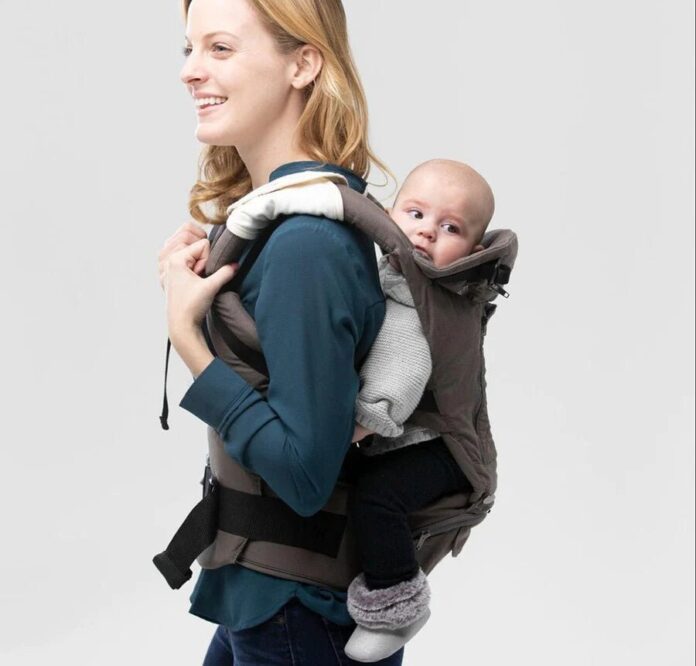Back carrying can be done from almost any age with proper care and caution for the baby’s safety and comfort. It requires the use of a suitable carrier to ensure a secure and ergonomic position for the child.
When considering back carrying, it’s essential to prioritize the protection of the baby’s airway and spine. Carrying your little one on your back can offer convenience and bonding opportunities, but it’s crucial to use the correct technique and equipment. From baby wraps to structured carriers, there are various options available to support safe and comfortable back carrying.
Understanding the proper age and guidelines for back carrying, along with tips for maintaining good posture, can help you enjoy this intimate and practical way of carrying your baby. Explore the different styles and benefits of back carriers for your child as you embark on adventures together.
Safety Considerations
Back carrying your baby in a carrier is possible from an early age as long as you take safety precautions to protect their airway and spine. Make sure to use a sling that facilitates safe positioning for your baby’s comfort and well-being.
Choosing The Right Carrier
When it comes to using a baby carrier on your back, safety considerations are of utmost importance. Before selecting a carrier, ensure it is specifically designed for back carrying and complies with safety regulations. Always opt for a carrier with appropriate padding, secure buckles, and adjustable straps to evenly distribute your baby’s weight.Age And Positioning Guidelines
The appropriate age for back carrying can vary depending on the baby’s physical development. Most experts suggest that back carrying can be done safely from around 6 months when the baby can hold their head up and has strong neck control. As for positioning, it is crucial to ensure that your baby is properly seated in an ergonomic position with their knees higher than their hips to avoid any strain on their developing spine. Can I wear my Ergobaby carrier on my back? How Do I Back Carry in the Ergobaby Carrier? – YouTube https://m.youtube.com › watch Are baby carriers bad for posture? A badly fitted baby carrier can even cause back pain. A well-fitted baby carrier can be part of the solution. A tightly fitted, well-adjusted spinner further strengthens the bond with their caregiver while providing a safe and comfortable experience for both. Always prioritize safety when considering back carrying with a baby carrier, and adhere to the guidelines provided by the specific carrier manufacturer. By selecting the right carrier and following age and positioning recommendations, you can ensure a secure and comfortable back carrying experience for both you and your baby.How To Back Carry
When it comes to back carrying your baby, it’s important to follow the correct steps for safety and comfort. Below, we provide step-by-step instructions and video tutorials to help you master the art of back carrying with a baby carrier.
Step-by-step Instructions
- Start by ensuring your baby is securely positioned in the carrier at your front.
- Adjust the straps and buckles of the carrier to fit snugly and securely.
- Lean forward slightly while supporting your baby and slide them around to your back.
- Secure the carrier around your waist and shoulders, ensuring a firm and comfortable fit.
- Check that your baby’s airway is clear and they are in a safe and supportive position.
Video Tutorials For Back Carrying
For visual guidance on how to back carry using a baby carrier, watch the following video tutorials:
Best Baby Carriers For Back Carrying
Discover the top Baby Carriers for effortless back carrying. These innovative carriers ensure comfort and safety for both baby and parent while providing versatile carrying positions. Perfect for parents on the go who value convenience and closeness with their little one.
Feel confident and supported with these reliable baby carriers.
When it comes to carrying your baby on your back, safety and comfort are of utmost importance. With the right baby carrier, you can enjoy hands-free mobility while keeping your little one close and secure. If you’re looking for the best baby carriers for back carrying, we’ve got you covered. In this article, we’ll be highlighting two top options that are loved by parents everywhere.
Ergobaby Omni Breeze Baby Carrier
If you’re in search of a versatile and breathable baby carrier, the Ergobaby Omni Breeze is an excellent choice. This carrier is designed to keep both you and your baby comfortable, even during hot summer days. Its breathable mesh panels create a cooling effect, ensuring that your little one stays cool and dry. Additionally, the padded shoulder straps and lumbar support help distribute your baby’s weight evenly, reducing strain on your back and shoulders.
Not only is the Ergobaby Omni Breeze comfortable, but it also offers multiple carrying positions, including front inward, hip, and back. This allows you to adjust the carrier to suit your baby’s developmental stage and your own comfort. Whether you’re out for a walk or running errands, this carrier provides the perfect blend of flexibility, support, and breathability.
Lillebaby Complete Original Baby Carrier
Another popular option for back carrying is the Lillebaby Complete Original Baby Carrier. This carrier is designed to provide optimal comfort and ergonomic support for both the wearer and the baby. With its adjustable seat and straps, you can easily customize the carrier to ensure a perfect fit for your little one.
The Lillebaby Complete Original Baby Carrier also offers excellent lumbar support, providing relief for your back and reducing strain. The carrier features a large storage pocket, allowing you to conveniently carry essentials such as diapers, wipes, and keys. Plus, its adjustable hood provides sun protection and privacy for nursing moms.
With its wide range of patterns and colors, the Lillebaby Complete Original Baby Carrier combines style with functionality. Whether you’re strolling through the park or exploring the city, this carrier will keep your baby safe, secure, and close to you.

Credit: oschaslings.com
Common Concerns
When it comes to using a baby carrier on your back, many parents have common concerns. In this section, we will address three of the most common concerns: impact on posture, potential risks, and how to mitigate them.
Impact On Posture
Wearing a baby carrier on your back can have a significant impact on your posture. If the carrier is poorly fitted or not adjusted correctly, it can cause discomfort and put strain on your back. However, when used correctly, a well-fitted baby carrier can actually improve your posture.
A tightly fitted and well-adjusted sling will distribute your baby’s weight evenly and support your spine. This will naturally make you stand up straight, relieving any strain from your back. It can even encourage proper alignment of your spine, which is essential for maintaining good posture.
Potential Risks And How To Mitigate Them
While using a back baby carrier is generally safe, there are a few potential risks that you should be aware of. By taking proper precautions, you can mitigate these risks and ensure the safety and comfort of both you and your baby.
Here are some potential risks and how to mitigate them:
- Airway Blockage: Ensure that the carrier you choose allows your baby’s airway to remain clear at all times. Check that your baby’s chin is off their chest, and their face is visible and unobstructed.
- Spine Support: It is essential to provide adequate support to your baby’s spine when using a back carrier. Look for a carrier that offers proper head and neck support for newborns or young infants and allows for proper alignment of the spine.
- Weight Distribution: A well-designed carrier should distribute the weight of your baby evenly across your back and hips. Ensure that the carrier is adjusted correctly to achieve proper weight distribution and prevent any strain on your back.
- Comfort: Both you and your baby should feel comfortable in the carrier. Adjust the straps and buckles to achieve a snug fit without causing any discomfort or pressure points.
- Overheating: Check that the fabric of the carrier allows for proper airflow to prevent your baby from overheating. Avoid using heavy or thick materials in warm weather.
- Age and Development: Only use a back baby carrier when your baby has sufficient neck and head control to support themselves. It is recommended to consult with your pediatrician for specific guidelines based on your baby’s age and development.
By being aware of these potential risks and taking the necessary precautions, you can safely and comfortably use a baby carrier on your back.
Recommended Back Carrying Activities
When it comes to using a baby carrier on your back, there are various engaging activities you can enjoy with your little one by your side. Here are some recommended back carrying activities:
Hiking With Baby
- Choose a sturdy baby carrier designed for hiking.
- Ensure your baby is securely fastened in the carrier.
- Explore nature trails and enjoy the great outdoors with your baby.
- Stay hydrated and take breaks as needed.
Everyday Adventures
- Run errands while keeping your hands free.
- Go for a walk in the park or around your neighborhood.
- Attend events and festivals with ease.

Credit: www.lillebaby.com
Expert Tips And Advice
When using a baby carrier on your back, it’s crucial to ensure proper positioning to guarantee the safety and comfort of both the wearer and the baby. Additionally, avoiding overexertion is essential to prevent strain and injury. Here are some expert tips and advice to consider when carrying your baby on your back.
Ensuring Proper Positioning
To ensure the correct positioning of the baby when using a carrier on the back, it’s important to follow these tips:
- Always make sure the baby’s airway is clear and the chin is not pressed into the chest.
- Check that the baby’s back is well-supported, and there are no gaps that could compromise their safety.
- Keep the baby’s hips in the “M” position to support healthy hip development.
- Utilize a mirror or assistance to check and adjust the baby’s position to ensure they are secure and comfortable.
Avoiding Overexertion
To prevent overexertion when carrying the baby on your back, consider these expert tips:
- Practice proper lifting techniques to avoid straining your back when placing the baby on your back.
- Ensure the carrier is properly adjusted and evenly distributes the baby’s weight to minimize strain on the wearer’s back and shoulders.
- Take breaks and avoid prolonged periods of carrying the baby on your back to prevent muscle fatigue.
- Listen to your body and adjust the carrier or take a break if you experience any discomfort or fatigue.
Conclusion And Product Recommendations
Now that you’ve learned about choosing the right carrier and tips for comfortable and secure back babywearing, let’s explore some top baby carrier products recommended by users and experts.
Choosing The Right Carrier
When choosing a carrier, consider factors such as weight capacity, ergonomic design, and adjustable straps for a comfortable fit. Look for carriers that offer lumbar support to alleviate back strain from prolonged wear and distribute the baby’s weight evenly.
Tips For Comfortable And Secure Back Babywearing
- Ensure the carrier is properly adjusted and secure before placing your baby in it.
- Practice back babywearing with the assistance of a spotter until you are comfortable and confident with the technique.
- Regularly check your baby’s position in the carrier to ensure their airway and spine are protected.
- Take breaks to avoid fatigue and strain on your back and shoulders.
| Product | Price |
|---|---|
| Tula Baby Carrier | $164.00 |
| Lillebaby Dragonfly Wrap Baby Carrier | $89.99 – $130 |
| Ergobaby Omni Breeze Baby Carrier | $159.00 |

Credit: babytula.com
Frequently Asked Questions
Can You Wear Baby Carrier On Back?
Yes, you can wear a baby carrier on your back as long as the positioning is safe for the baby’s airway and spine. Back carrying can be done from an early age with appropriate care and caution. Ensure the sling supports safe positioning.
What Age Can Babies Go In A Back Carrier?
Babies can be carried in a back carrier from a young age with proper caution. It is essential to use a suitable sling for safe positioning.
Can I Wear My Ergobaby Carrier On My Back?
Yes, you can wear your Ergobaby carrier on your back. Back carrying can be done from almost any age with proper care and caution for the protection of the airway and spine. Ensure you have the appropriate sling to facilitate safe positioning.
Are Baby Carriers Bad For Posture?
Poorly fitted baby carriers can lead to back pain. A properly adjusted carrier supports your baby’s weight close to you, promoting good posture and spine alignment.
Conclusion
Carrying your baby on your back is a safe and convenient option for parents. With proper positioning and caution, back carrying can start at a young age. Choosing the right carrier is essential for comfort and spine alignment. Explore the wide range of back carriers available for you and your little one.




